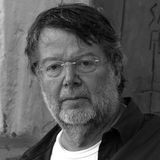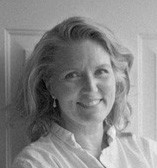Sculptor Karen Schmidt interviews Roberta Green Ahmanson and renowned Danish artist Peter Brandes.

Peter Brandes is a painter, sculptor, ceramic artist and photographer. He holds the record for having creating (11 times) the largest ceramic vessels in the history of the world. Both Brandes, and his wife Maja Lisa Engelhardt, are involved in liturgical design. During the past twenty-five years they have been in large part responsible for a “renaissance in Danish church interiors.” They have made work for over 20 churches with stained glass, painted altarpieces, floor coverings, mosaics, vestments and metal work, all essential components of their extensive ecclesiastical projects. Brandes has recently completed a new commission, The Church of the Northern Lights at the tip of Norway.

Roberta Green Ahmanson is a writer and philanthropist whose public activities are focused on deepening awareness and understanding of the role of religion in public life, the importance of knowing history to understand the present, and the vital role the arts play in shaping human experience. Since 1986, Ahmanson has worked with her husband, Howard, in shaping the granting priorities of his private philanthropy, Fieldstead and Company. In that time, the Ahmansons have sponsored a number of art exhibitions in the United States and Great Britain including “Caravaggio: The Final Years” and “Sacred Made Real,” both at the National Gallery in London. Ahmanson currently chairs the board of directors for the Museum of Biblical Art in New York City. In addition to lecturing for the International Arts Movement in New York City, Ahmanson is the co-author with Paul Marshall and Lela Gilbert of Islam at the Crossroads, 2002, and a contributor and co-editor with Marshall and Gilbert of Blind Spot: When Journalists Don’t Get Religion, forthcoming from Oxford University Press.

Born in Los Angeles, sculptor, Karen Schmidt, studied fine art and education at California State University Fullerton, and earned degrees in both disciplines. She first worked as an elementary school teacher and later became a full-time homemaker while designing and creating banners and installation art for various churches. Beginning in 1996, she studied under Russian artist and sculptor Simon Kogan, which allowed her to acquire a foundation for understanding the classical approach to the human figure. In addition to Simon Kogan’s instruction and influence, her sculptures have been greatly informed by the work of such artists as Maillol, Bourdelle, Marino Marini, Barlach, and Henry Moore.
Karen’s formal artistic training and natural aesthetic sensibility yields compelling work that is able to communicate spiritual truths through form, gesture, and symbol. Much of the imagery in Karen’s work is derived from the biblical narrative, which both points to specific moments throughout the biblical story and also encompasses greater truths that speak to the realities of the human condition. While minimal in style, it is the gesture and form of each of her figures that enables every piece to visually articulate the emotional and spiritual elements of the stories they reflect; thereby producing works of art that are rich in symbolic and multi-faceted meaning.